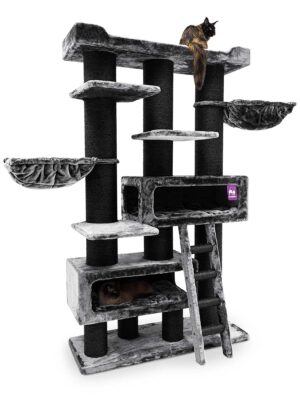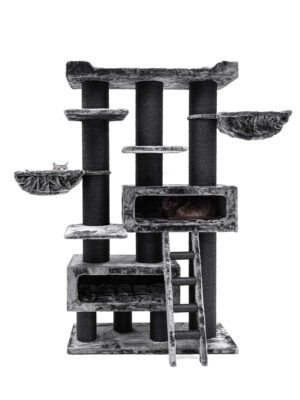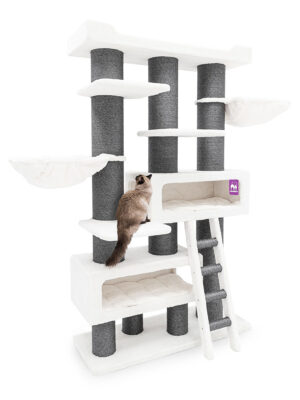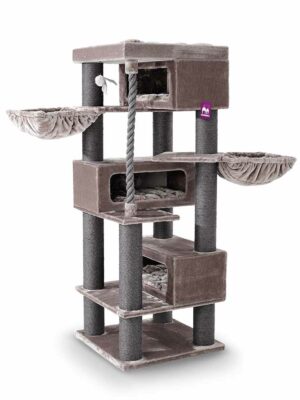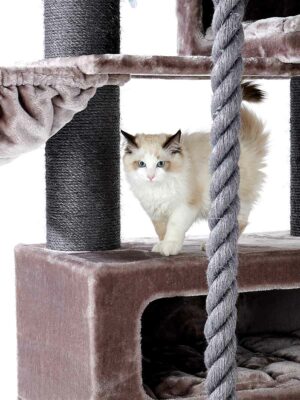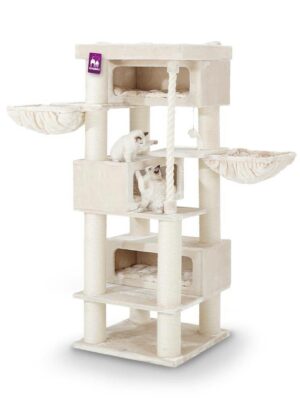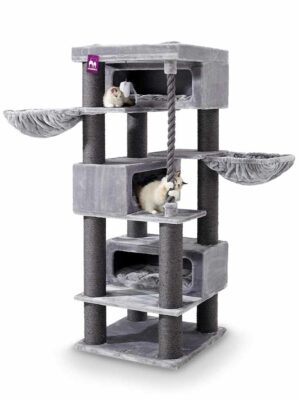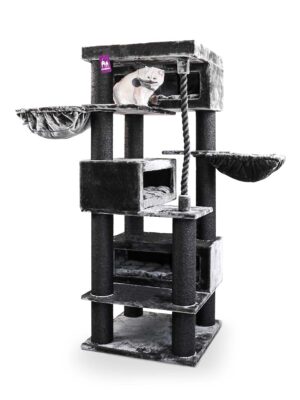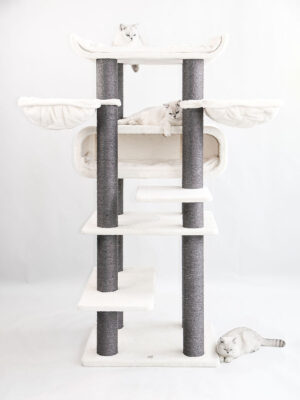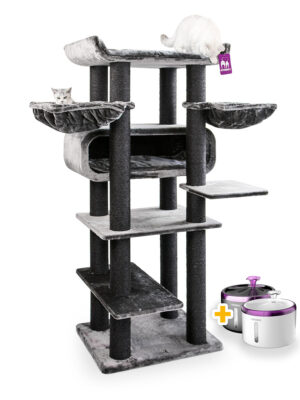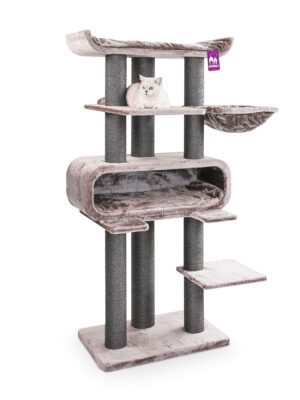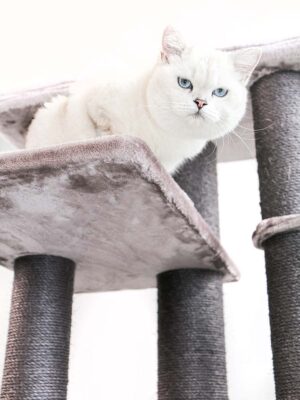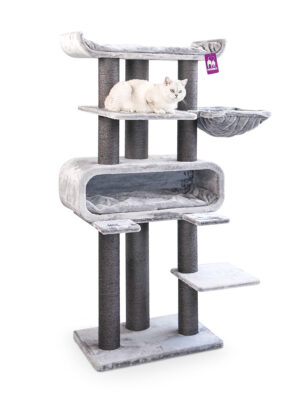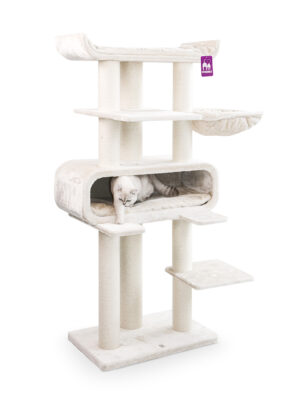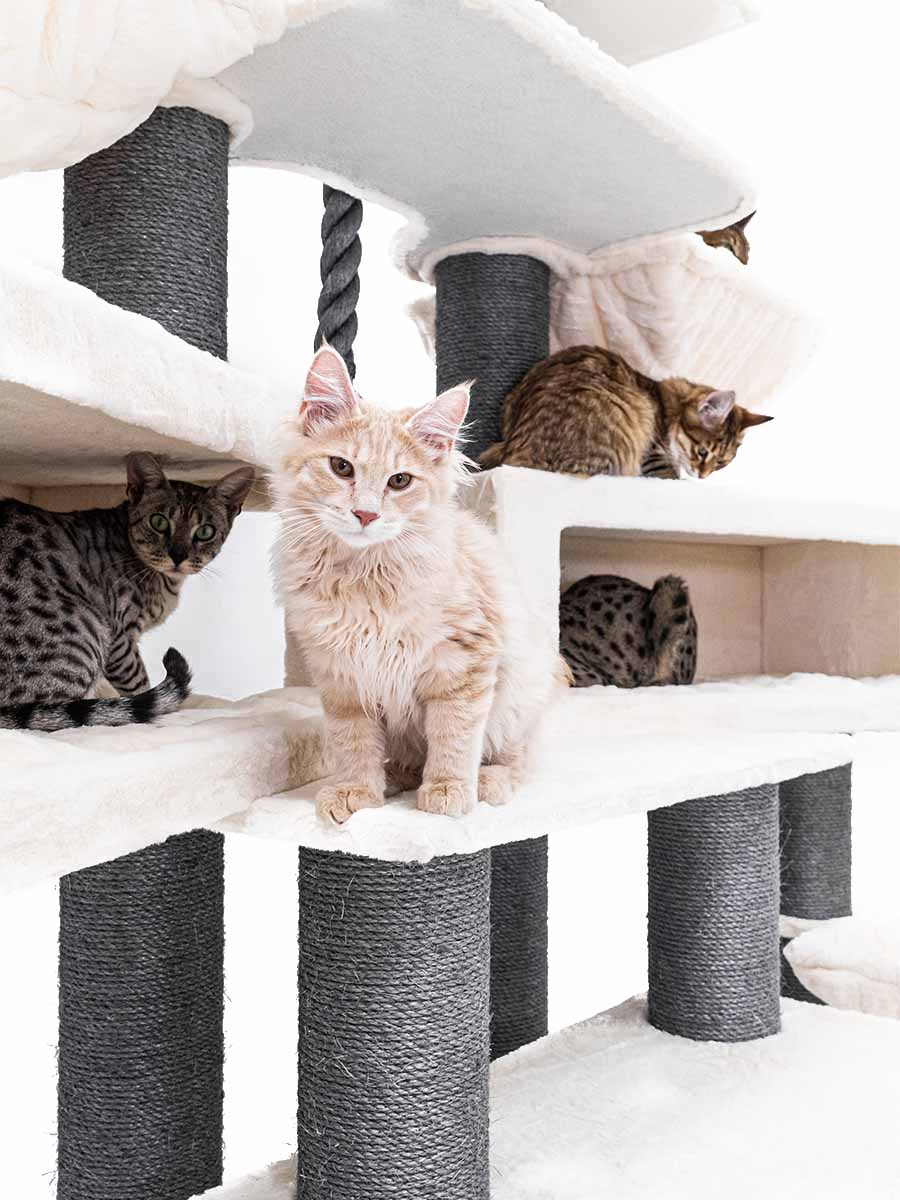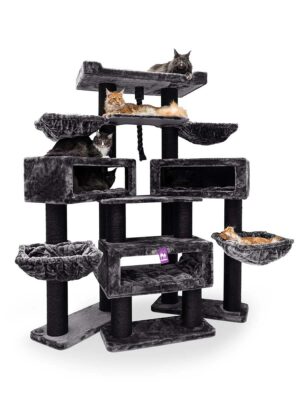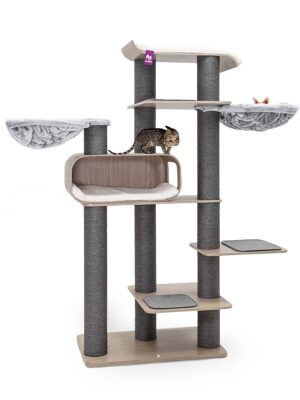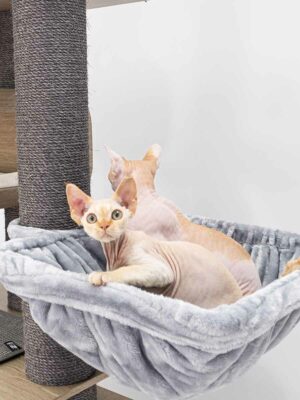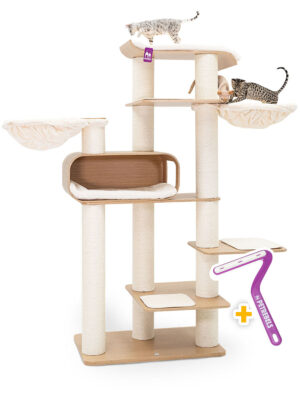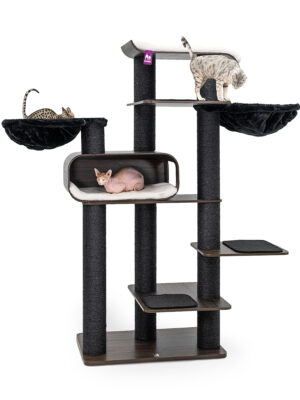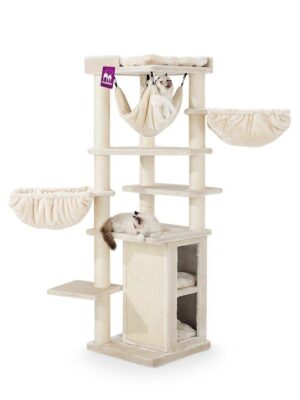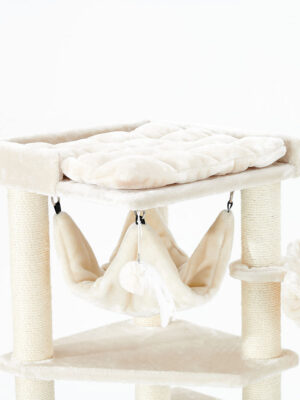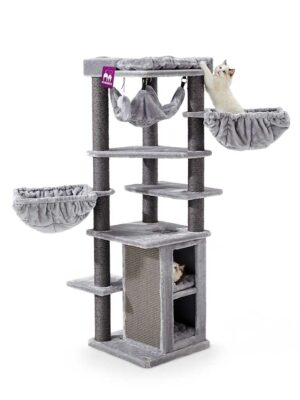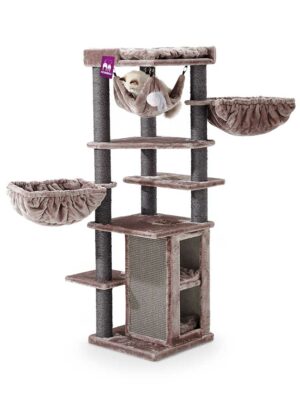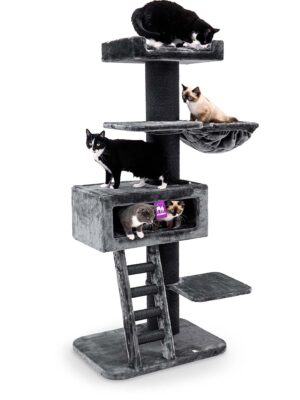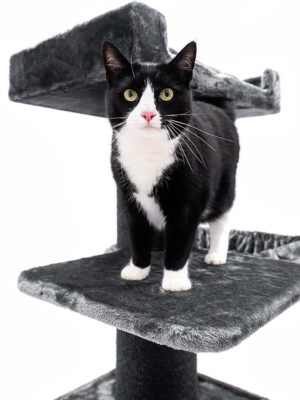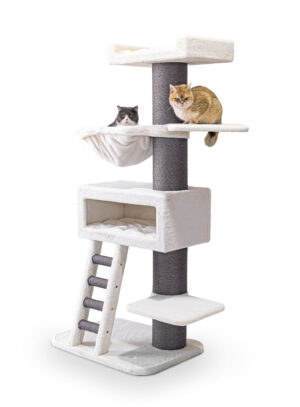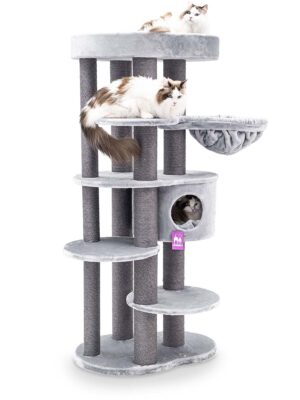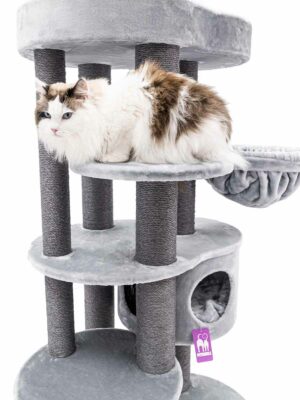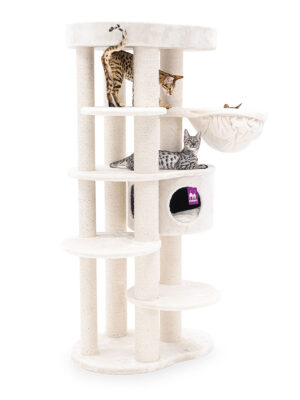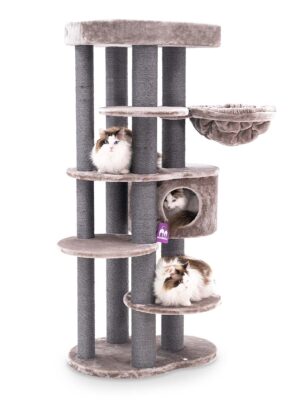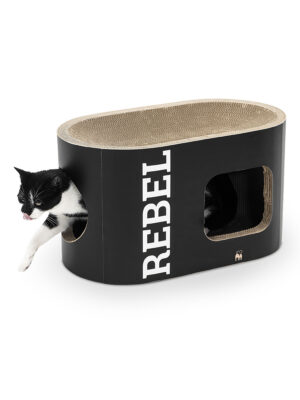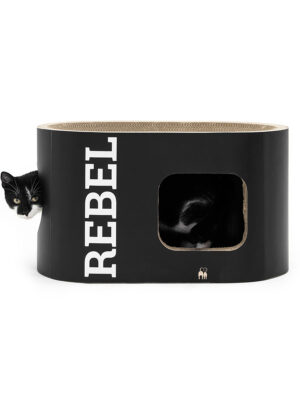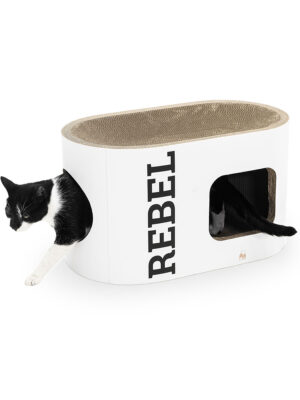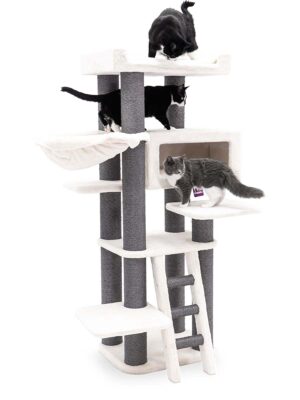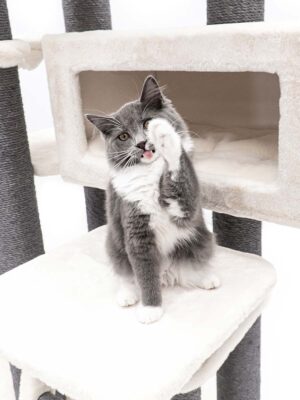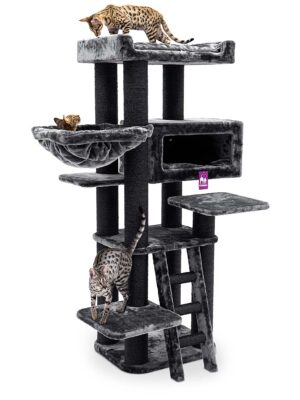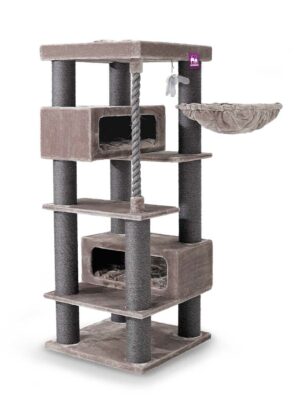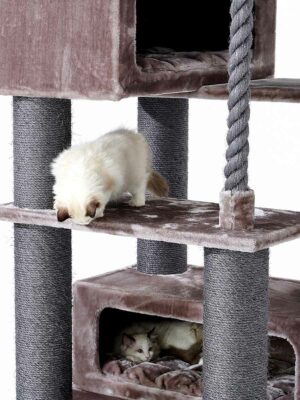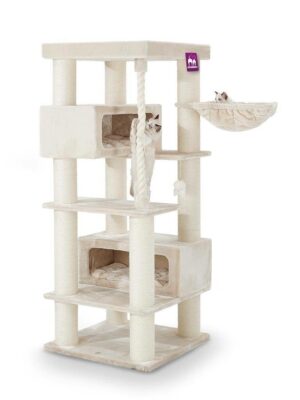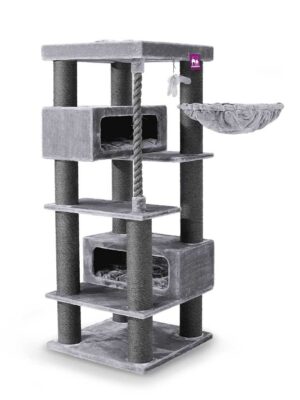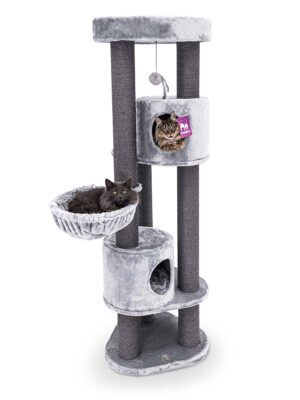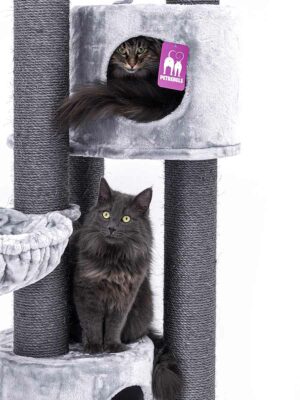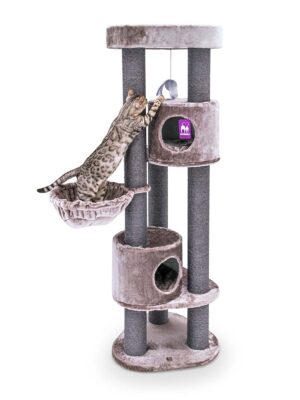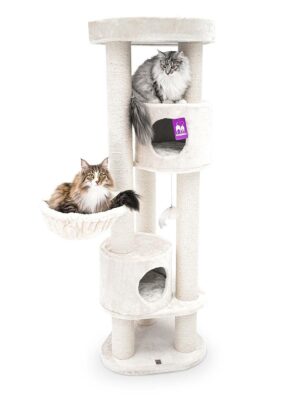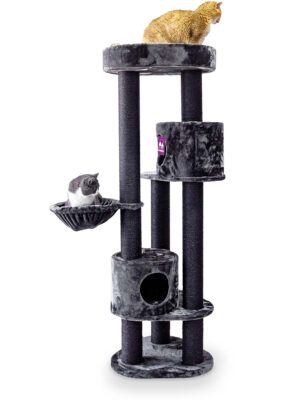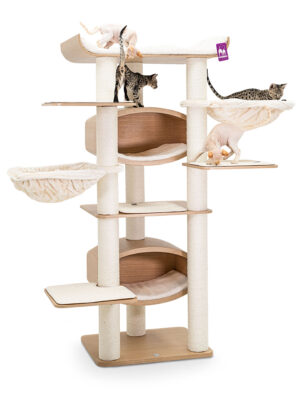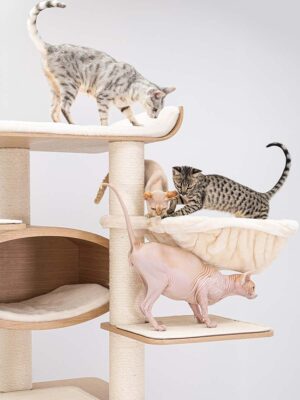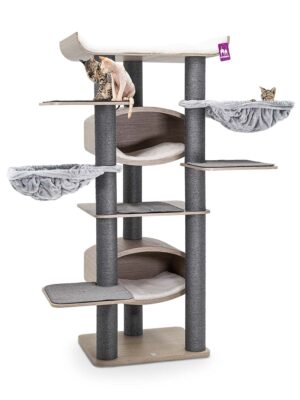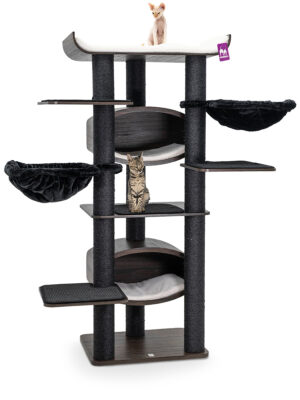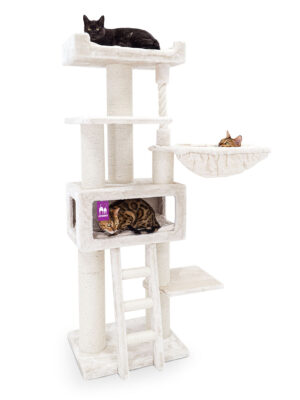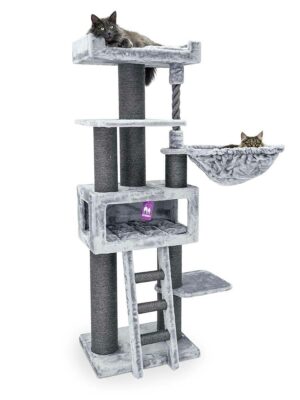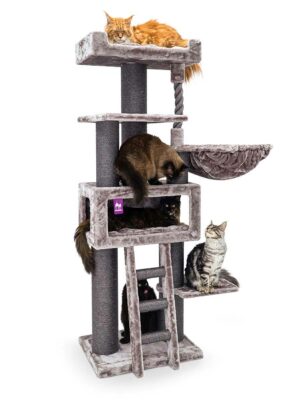Cat Tree for Cats
You support your cat in many ways by choosing from the wide range of cat trees from Petrebels. We’re happy to share more with you, including tips and stories from our in-house cat experts (we have plenty of them at Petrebels).
Discover the different types of cat trees in our collection, the various materials they’re made from, and what to pay attention to when making a purchase. That way, your little rebel will be completely happy with you!
-
Original price was: €719,-.€599,-Current price is: €599,-.118 × 45 × 200 cm77kgYou save 17%Original price was: €599,-.€529,-Current price is: €529,-.76 × 76 × 200 cm83kgYou save 12%Original price was: €599,-.€499,-Current price is: €499,-.76 × 60 × 190 cm60kgYou save 17%Original price was: €489,-.€419,-Current price is: €419,-.76 × 50 × 180 cm48kgYou save 14%Original price was: €899,-.€769,-Current price is: €769,-.187 × 82 × 200 cm108kgYou save 14%Original price was: €929,-.€499,-Current price is: €499,-.90 × 60 × 200 cm50kgYou save 46%€299,-50 × 50 × 158 cm32kgOriginal price was: €399,-.€329,-Current price is: €329,-.78 × 58 × 179 cm36.85kgYou save 18%Original price was: €499,-.€419,-Current price is: €419,-.78 × 58 × 170 cm43.1kgYou save 16%Original price was: €57,50.€47,50Current price is: €47,50.60 × 32 × 34 cm2.45kgYou save 17%Original price was: €469,-.€399,-Current price is: €399,-.58 × 48 × 170 cm43.2kgYou save 15%€549,-76 × 76 × 190 cm73kg€299,-59 × 56 × 180 cm38.8kg€1.049,-70 × 58 × 187 cm47kg€359,-58 × 45 × 175 cm35kg
Why Do Cats Actually Need a Cat Tree?
Scratching is a natural, instinctive behavior for cats. That’s why you see your cat doing it regularly. A cat tree serves several important purposes:
- Nail maintenance
By scratching, cats remove the old, dead outer layers of their claws, keeping them sharp and healthy. - Territory marking
Cats have scent glands in their paws. When they scratch, they leave both visible marks and scent signals. It’s their way of saying, “This is my territory.” - Stretching and flexibility
Cats often make a deep stretch while using a cat tree, especially through their back, shoulders, and legs. This helps keep their muscles limber and strong. - Releasing stress and expressing emotion
Scratching is also a way for cats to release tension, frustration, or excitement. - Burning off energy
A cat tree is ideal when your cat gets the zoomies. It offers a safe outlet for bursts of energy.
What Is Normal Cat Tree Behavior for a Cat?
Our graphic designer, product developer and cat enthusiast Bodi knows more about this.
“Well, what’s normal, right? Whether they scratch for just a few seconds or a full minute, cat trees are helpful. Cat barrels too, though in a different way. A barrel gives your cat a sheltered spot to retreat. Many cat trees also have lounging areas. But something like the Maine 90 is designed purely for scratching.”Where your cat chooses to scratch on the tree is often unpredictable. Over time, you will notice your cat has one or two favorite posts that wear out first. If your cat starts scratching the base plate, it may want a horizontal surface like a scratch mat. Most cats ignore the fabric, but if yours does scratch it, correct them gently and guide them toward the sisal rope.
Now about teaching and unlearning behavior
What Types of Cat Trees Are There
Get ready, because there’s more than enough to choose from:
- XXL cat trees
- Small cat trees
- Wooden cat trees
- Cat trees for large cats
- Design cat trees
- Cat scratching barrel
- Cat Shelves
What Are Cat Trees Made Of
Bodi, our product expert, can tell you all about the materials Petrebels uses for cat trees. “We use sisal rope and carpet because their rough texture holds up well against claws and both are natural materials. The rope is tightly wound in the opposite direction under high tension and glued to the post to extend its lifespan. Our cat trees are covered with thick plush because it’s soft and comfortable, yet relatively durable — especially when glued. Plush also provides enough grip for climbing and descending, which is important for your cat’s safety.”
“All our wooden cat trees have sisal mats on the surfaces, like the Virgo and Scorpius, to give cats maximum grip. It’s important that the sisal posts can carry a lot of weight. That’s why they’re made of strong ABS plastic wrapped in a thick cardboard layer. Our hammocks have a metal frame to handle higher loads. The platforms and base plates are weighted to improve the cat tree’s stability.”
How Do I Choose the Right Cat Tree for My Cat
Good question, but the answer depends on several factors. Think about how much space you have, what height suits your cat best, whether you want extra features for entertainment and—most importantly—your cat’s personality. That’s why we’ve included character type as a filter in our range. For example, you can browse all cat trees designed for the “Sleeper” type.
Read more: Want to buy a cat tree but not sure which one?
What Do Cat Trees Cost on Average
Another tricky question, because the answer is: it depends on what you’re willing to invest. You want quality, right? And quality doesn’t come cheap.
Bodi explains why. “The price of cat trees varies. At Petrebels, you’ll only find high quality, mainly because we use heavier materials to increase durability. Our designs are created with your cat’s well-being in mind. I design them together with the owners, Dennis and Detlef. Everything in our collection has its own style and meets strict quality standards. For example, we mechanically tension the sisal rope with extra force on the posts. The rope and plush are glued, and you can feel the difference. We have multiple quality inspectors in the factory and every model is thoroughly tested for stability. In short, you’re buying something that’s truly built to last.”
Can I Build a Cat Tree Myself
Absolutely, you can. The real question is whether you want to put in all that effort for something your cat is supposed to tear apart. In fact, the goal is for it to be scratched to pieces. That’s why buying a well-made cat tree is almost always the better choice.
What you can do, of course, is make small modifications. Want to swap out a hammock for a lounge platform or add an extra hammock? We offer all the separate spare parts you might need.
How Do I Best Maintain a Cat Tree
When you buy a new cat tree, you and your cat want to enjoy it for as long as possible — it’s more sustainable and better for your wallet. That’s why proper maintenance is key. Here’s how to do it:
- Vacuum the cat tree weekly
- Wash the cushions every two weeks at 30°C
- During flea season, wash the cushions weekly
- Tighten all posts firmly once a month
Want to know more about cat trees
Contact us at +31 (0) 73 6893 140 or info@petrebels.com
